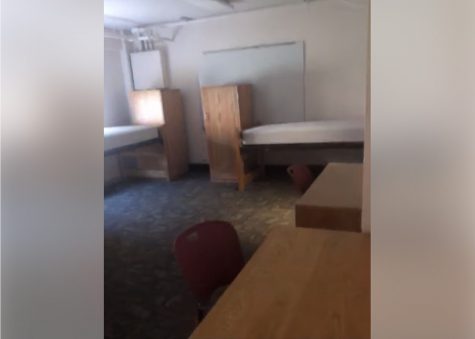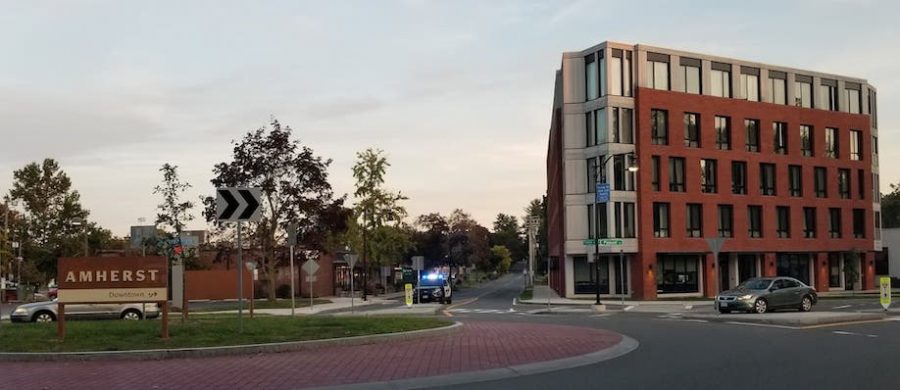Housing inequality in Amherst
October 11, 2019
AMHERST—Tom Fair comes to Amherst Community Connections, a nonprofit organization in downtown, every week to search for jobs and affordable housing. A former market gardener with a degree from UMass’ Stockbridge School, Fair became homeless about two years ago when he lost his farmland and has been working hard to better his situation.
Fair is just one of over 600 people who come to ACC yearly for help with their housing search. The problem, he says, is that there simply isn’t enough affordable housing in Amherst. To afford a one-bedroom apartment or a room in a shared house, one would need a yearly income of around $18,000, which many people simply don’t have.
“A lot of people don’t even try to look for housing because the move-in costs are so high,” Fair said. “First and last months’ rent, plus a security deposit just isn’t possible.” John Hornik, chairman of the Amherst Affordable Housing Trust, told the Daily Hampshire Gazette in August that the severe lack of affordable housing in Amherst amounts to a crisis.
Where does affordable housing go, and why are rent prices so high?
It’s a big question, but part of the answer is that low-income Amherst residents compete with a major demographic in the housing market: college students.
This fall, approximately 16,471 UMass Amherst students are not housed on campus. The majority of those students live in houses or apartments in Amherst that could otherwise be occupied by local families and individuals. For context, the town of Amherst’s total population is 37,819, according to the 2010 census.
That number includes students whose “usual residence” is in Amherst, which is many, though not all, of them. So, the number of UMass students living off-campus alone makes up about 43.5 percent of the town’s total population.
A study conducted in 2015 on the Amherst housing market found that “the student population is consuming the affordably priced housing that does exist.” Most “affordable” housing in Amherst is not deed restricted, meaning that it doesn’t have income qualification requirements; deed-restricted housing units may be reserved for low-income renters whose income qualifies them. Students are more able to pay the move-in costs upfront, leaving low-income renters on waitlists until units open up, which takes a long time since most leases are annual.
The report states, “it may seem that the shortage of on-campus housing and student-focused housing off-campus affects only the student body, but that is not the case. It has effectively “priced out” households at low- and moderate-income levels and disrupted the “ebb and flow” relationship with Amherst’s traditional ownership market.”
Non-student renters can’t compete with students’ abilities to pay rent. Students often get assistance from their parents and rent at “bedroom prices” —each roommate in a house pays rent for their bedroom individually, rather than for the entire dwelling.
This has caused a larger trend in Amherst’s rental housing market, which has established “per bedroom” rental pricing almost uniformly. These bedroom rates cumulatively add up to more than what a household earning even $30,000 to $40,000 yearly can afford. And renters who can afford those rates have to put up with living in units occupied primarily by students.
Many landlords also have a bias for students and professionals—scrolling through Craigslist, it’s difficult to find rental ads that aren’t specifically looking for those kinds of renters.
The demand for student housing is driving gentrification in the town. Kendrick Place opened in Amherst Center last year, conveniently located within walking distance of UMass’ campus. Its website states that it is “redefining luxury living in Amherst,” a mission statement that is blissfully ignorant of the large homeless population, which has a visible presence in downtown Amherst.
Kendrick Place advertises to students looking for off-campus housing—if you schedule a showing and mention their ad on the Off-Campus Housing website, they’ll give you a free Antonio’s gift card. The construction of luxury apartments at a time when there is an urgent need for affordable housing demonstrates that the affordable housing crisis will not solve itself in the private market. The Town of Amherst must address the problem with policies and funds.
These problems have existed in Amherst for years, but are poised to intensify as UMass increases its enrollment and overwhelms its housing capacity. This academic year, the university enrolled the largest freshman class in its history, of 5,800 students. This broke the record set by last year’s freshman class of 5,010. These steep increases in enrollment have led to a shortage of on-campus housing.
To accommodate extra students, many common rooms in residence halls have been converted into dorm rooms, and many doubles that were designed to fit two people now house three. In an effort to free up space in residence halls, UMass offered $1000 to students from Amherst and surrounding areas who chose to commute this semester, rather than live on campus. This housing shortage will push more students off-campus in the coming years.

These improvised living situations present safety hazards and lower the general quality of living. The problem is most pronounced in the Southwest towers, where there are three forced triples on every floor. Victoria, whose name was changed to protect her job as a Resident Assistant, says that having more students on her floor makes her already stressful job even more so. Roommates in forced triples are more likely to have conflicts, and she’s already had to mediate these fights.
“I don’t think they thought this through,” she said. “It’s ridiculous to think that three people can comfortably fit in such a tight space.” Victoria also commented that since “economy triples”, as they’re called, are offered at lower rates than doubles, “the students who really need to save money are the ones who have to suffer.”
Common spaces, most notably the dining halls and the library, are also becoming overcrowded. The new Student Union will be finished in Fall 2020, providing more common space for students and reopening the outdoor area that is now closed off for construction. However, it remains to be seen whether UMass’s campus and infrastructure can comfortably and sustainably accommodate its inflating population.
This increase in enrollment is a result of insufficient funding at the state level.
UMass spokesman Ed Blaguszewski told MassLive in January, “The university’s enrollment of out-of-state students has increased as state support for UMass has stagnated. Today, the state appropriation accounts for only 21 percent of UMass Amherst’s operating budget…In this same period, because the number of students has grown, the per-student spending has decreased by 31 percent.”
As the Commonwealth continues to under-fund public higher education, UMass increases tuition and fees; rates increased for the fourth year in a row, by 2.5% for the 2019-2020 academic year. By enrolling students that pay higher tuition rates, UMass is able to make up the deficit in funding that the state should be providing.
UMass’s administration then allocates that money towards vanity projects that will draw in new, tuition-paying students. To cite only one example, the fact that a new Worcester dining commons, complete with a new gym, is being constructed during a housing shortage indicates that the university’s priorities are misguided.
UMass recently announced that it’s seeking to construct new undergraduate and graduate housing units on campus through a public-private partnership. New housing facilities are expected to hold about 730 undergraduate and 150 graduate students. At a press briefing in January, a spokesperson for UMass stated that this project intends to bring more students back on campus and stimulate a more symbiotic relationship between students and the Amherst community.
However, these plans have been received with skepticism by Amherst Town Manager, Paul Bockelman, who told MassLive in January, “We will be watching this project very closely.” Even if the project is executed well, these housing units will not open until Fall 2022 at the earliest. In the meantime, students displaced by construction, including some graduate student families with children, will look for housing in town.
Of course, students living off-campus are not the sole cause of Amherst’s affordable housing shortage. The Town of Amherst must fund affordable housing and implement measures to protect the rights of low-income renters in the housing market. Hwei-Ling Greeney, the founder of Amherst Community Connections, is leading an effort to make housing affordable for low-income renters.
“Amherst currently offers affordable housing for people at 30% of the Area Median Income (AMI), which is about $18,000 a year,” she said. “Social Security provides its recipients with income at 15% of the AMI, which is $9000 a year. The Town of Amherst needs to make housing affordable at that income level.”
There is a long chain of cause and effect at work here, and the network of people who suffer its consequences is extremely large. To be sure, the affordable housing crisis in Amherst has existed for years. It wasn’t caused by the recent increase in enrollment at UMass—though that will only make it worse—nor will it be solved if UMass’ enrollment returns to a more manageable number.
The fact is that UMass students have long had this effect on Amherst’s housing market, and the UMass community should be aware of that. UMass is not an island unto itself and Amherst is not its background. Still, the connection is significant because it can inform how we think about these two issues separately, and it presents possibilities for coalition building. The two issues can, to different extents, be traced to the same sources.
Affordable housing advocates have long understood the influence that the university has on the market, and students advocating for affordable, or free public college may also become advocates for housing justice.
Email Quinn Breen at [email protected] or follow him on Twitter @QBreen
